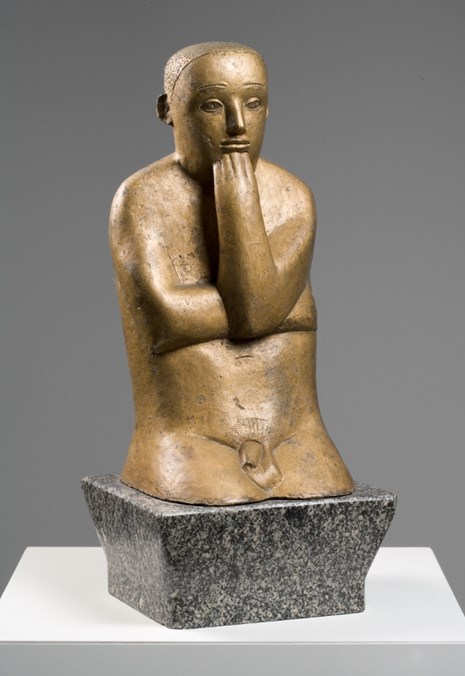The piece Obsessive Thoughts by the Lithuanian sculptress Ksenija Jeroševaitė challenges the ideological iconography of Soviet heroes. With witty irony, she turns to consider the small person, tortured by his inner doubts, obsessive thoughts and even some kind of animal (maybe rats?) climbing up his back. Before us is a generalised image, not an individual person, maybe even of the person next to us. Have you ever noticed how often artists who draw, mould or engrave human figures recreate a likeness similar to the artist or his or her dearest ones?
The generalised treatment of form tells us of the artist's interest in ancient civilisations (Sumerian, Etruscan or Mayan).
It is hard to believe, but at the time, durable materials (such as bronze) were used only for casting work that was commissioned by the state, usually ideological works. This statue is an exception, an illustration of alternative solutions. It was cast by the artist, and produced using the ancient lost-wax technique. To be more precise, it is a replica of a granite sculpture that is now in the Martynas Mažvydas Sculpture Park in Klaipėda, also made in 1982, at the Smiltynė Granite Symposium, which was famous for its liberal spirit.



